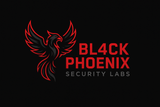Resource Guard: A Custom Solution for Shared Server Stability

In environments where computing resources are shared, the challenge of maintaining system stability can be a perpetual battle. Often, an individual's heavy-duty computational task can inadvertently consume a disproportionate amount of CPU and memory, leading to system sluggishness, unresponsiveness, or even outright crashes. This not only disrupts ongoing work for all users but also introduces a significant drag on productivity and operational efficiency. Bl4ckPhoenix Security Labs explores a compelling case study where an individual, faced with this very dilemma in a graduate lab setting, took matters into their own hands to engineer a custom solution.
The Pervasive Problem of Unmanaged Resource Consumption
The scenario is familiar to many: a shared server, whether in an academic lab, a development team, or a small business, serving multiple users running diverse workloads. While resource allocation might seem straightforward in theory, in practice, it's often a free-for-all. A single user launching a memory-intensive data analysis script, a CPU-bound simulation, or an unoptimized build process can quickly starve the system of vital resources. The consequence? Other users experience frozen applications, failed commands, and ultimately, a downed server.
For organizations, this translates into tangible losses: lost work hours, delayed project timelines, and the frustration of dealing with intermittent system availability. From a cybersecurity perspective, while not a direct vulnerability, an unstable system is a less predictable and therefore less secure system. Critical security services or monitoring tools could be impacted, leaving the environment vulnerable during periods of high resource contention.
A Pragmatic Approach: Engineering a Custom Limiter
The individual behind this innovative solution, operating as the de facto "computer guy" rather than a formal sysadmin, recognized the futility of repeatedly troubleshooting crashed servers. Instead of merely patching symptoms, a more robust, preventative measure was needed. The objective was clear: prevent any single user or process from monopolizing system resources, ensuring a baseline level of stability for all.
The proposed solution involved developing a custom tool designed to actively monitor and, if necessary, limit the CPU and memory consumption of processes on the shared machines. While the specifics of the tool's implementation were not detailed, such solutions typically leverage underlying Linux kernel features like control groups (cgroups). Cgroups provide a mechanism to organize processes into hierarchical groups and allocate system resources (CPU, memory, I/O, network, etc.) among them. This allows administrators (or in this case, a resourceful individual) to set hard limits or proportional shares for resource usage, effectively containerizing resource consumption without necessarily using full-blown container runtimes like Docker.
Key Considerations for Resource Management Tools:
- Granularity: Can limits be applied per user, per process, or per group of processes?
- Dynamic Adjustment: Can limits be adjusted on the fly based on system load or specific user needs?
- Transparency: How are users informed of resource limits, and is there a mechanism for requesting more resources?
- Impact on Performance: How does the overhead of the monitoring and enforcement mechanism affect overall system performance?
- Security Implications: Does the tool itself introduce any potential vulnerabilities or privilege escalation paths?
The development of a bespoke tool in this scenario underscores a critical principle in IT and cybersecurity: sometimes, off-the-shelf solutions are either too complex, too expensive, or simply not tailored enough for a unique operational challenge. A custom-built, lightweight utility can often provide the most effective and efficient answer, particularly when the core problem is well-understood and specific.
Lessons for Bl4ckPhoenix Security Labs
This initiative highlights several valuable insights for any organization managing shared infrastructure:
- Proactive Problem Solving: Addressing the root cause of instability through preventative measures is far more effective than reactive troubleshooting.
- Empowering Local Expertise: Individuals "on the ground" often have the deepest understanding of recurring issues and can devise pragmatic solutions. Recognizing and supporting such initiatives can foster innovation.
- Fundamental Resource Governance: Effective resource management is a cornerstone of system reliability and, by extension, security. Preventing resource exhaustion ensures critical services remain available and responsive.
- Leveraging OS Capabilities: Understanding and utilizing core operating system features, such as Linux cgroups, can provide powerful and flexible control over system behavior.
The story of the self-made resource limiter is a testament to the ingenuity found within technical communities. It’s a reminder that complex problems often yield to clever, practical solutions born out of necessity and a deep understanding of the immediate environment. For Bl4ckPhoenix Security Labs, it reinforces the importance of robust system architecture and the creative application of technical knowledge to ensure operational resilience.




